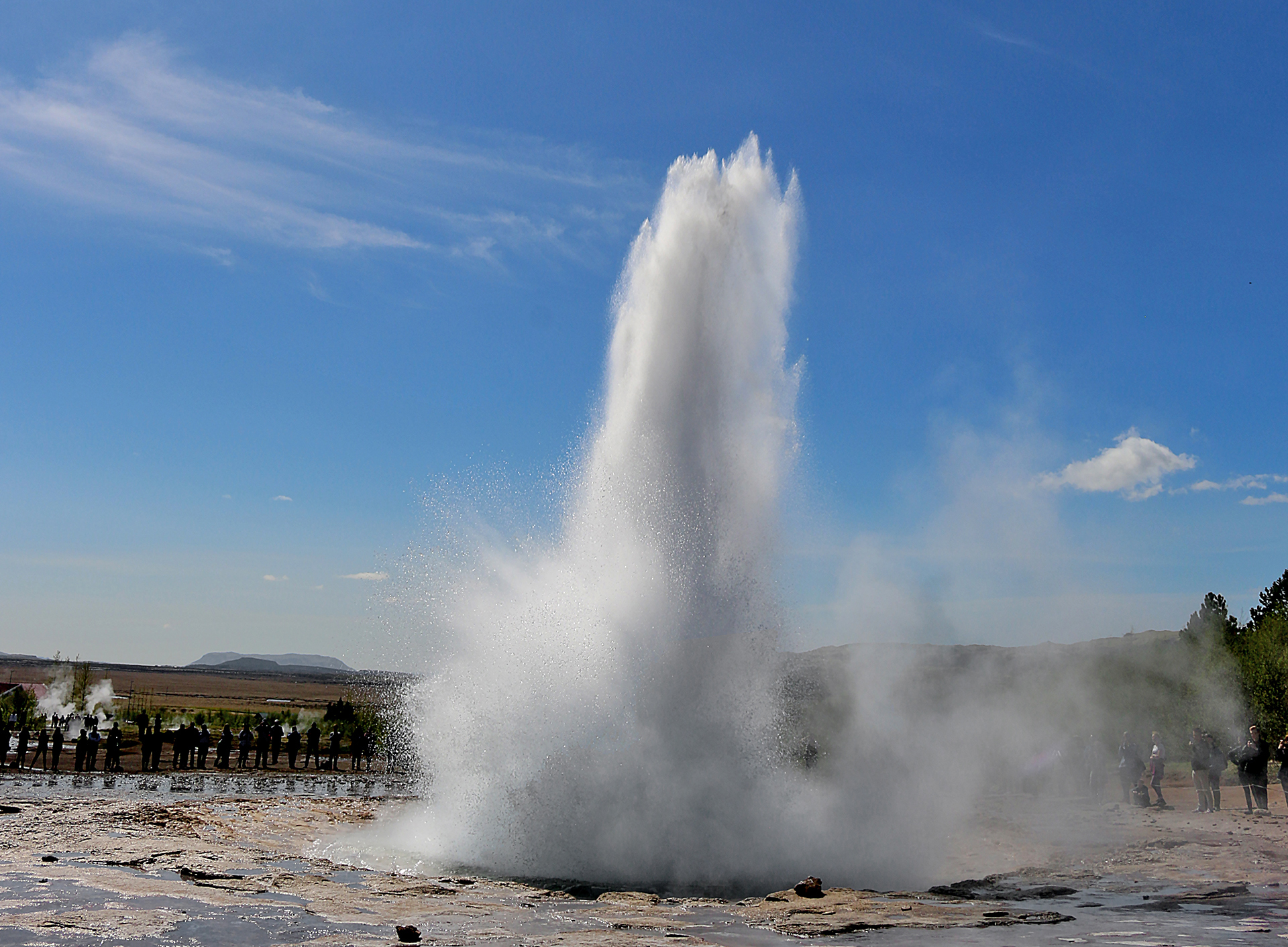Similar to its counterpart in the United States known as Old Faithful, Strokkur Geyser eruptions at Geysir Geothermal Area in Iceland — which some people also call Geysir Hot Springs — are reliable and rather easy to catch; and you do not need much time to wait until the next eruption if you missed the last one.
Strokkur Geyser Eruptions at Geysir Geothermal Area in Iceland

Expect Geysir Geothermal Area to be crowded with plenty of visitors and tour buses — but that will not impede upon your overall experience. If you drive to this spot — which includes a visitor center — watch for pedestrians who must cross the road to get to the park itself.

Upon entering the park, the hot spring named Smidur is one of the first features which visitors see. Smidur — which translates from Icelandic to English as The Smith — billows steam from the chimney of a small hut. One can easily climb the elevation of 613 feet up Laugarfjall Mountain — which is shown in the background behind Smidur — for a panoramic view of the Geysir Geothermal Area.
Stages of Eruption of Strokkur Geyser

The main attraction is Strokkur, which is a geyser that erupts every five minutes to every ten minutes…
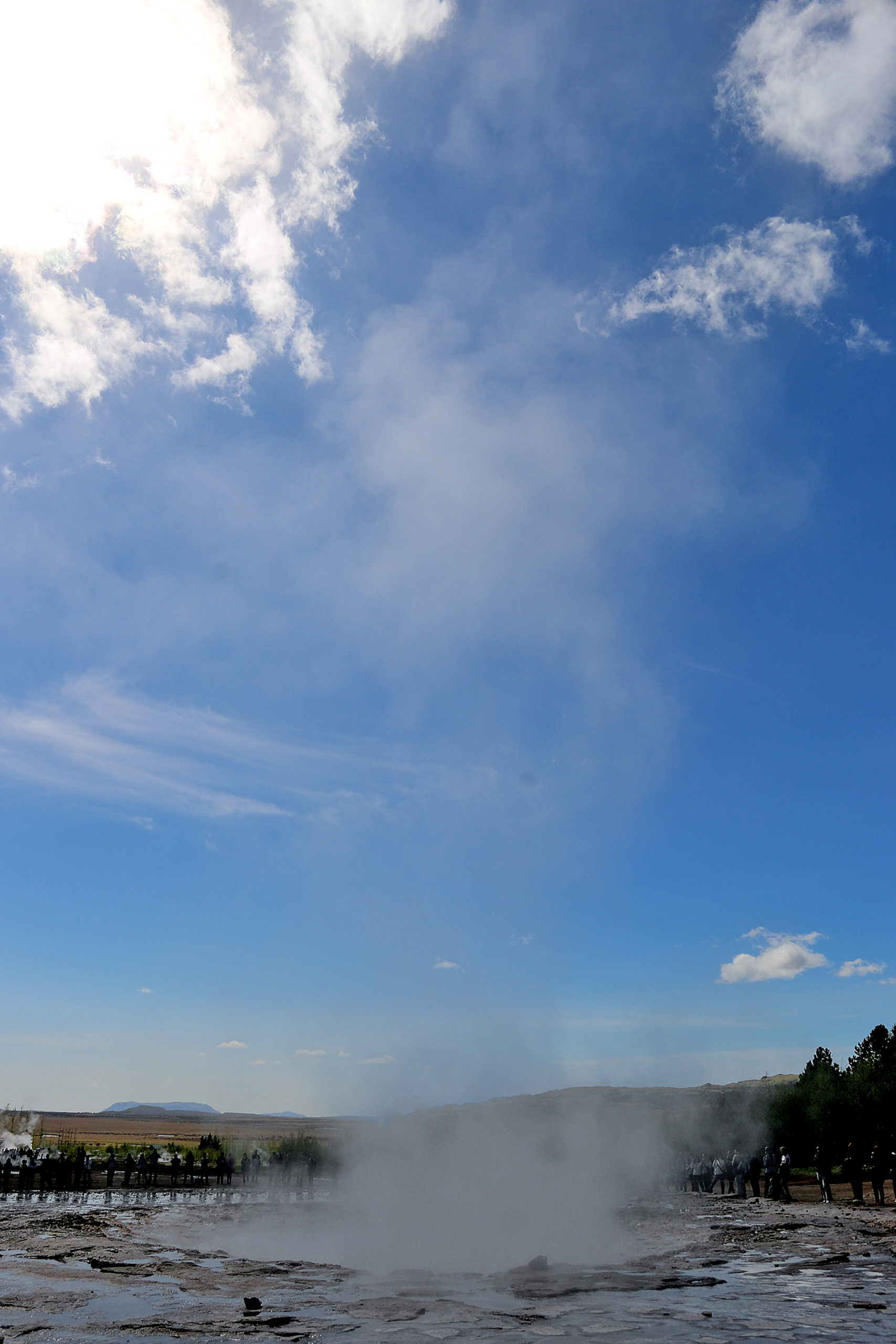
…so visitors do not need to wait long to watch it in action, which is presented here in stages of one of its eruptions.
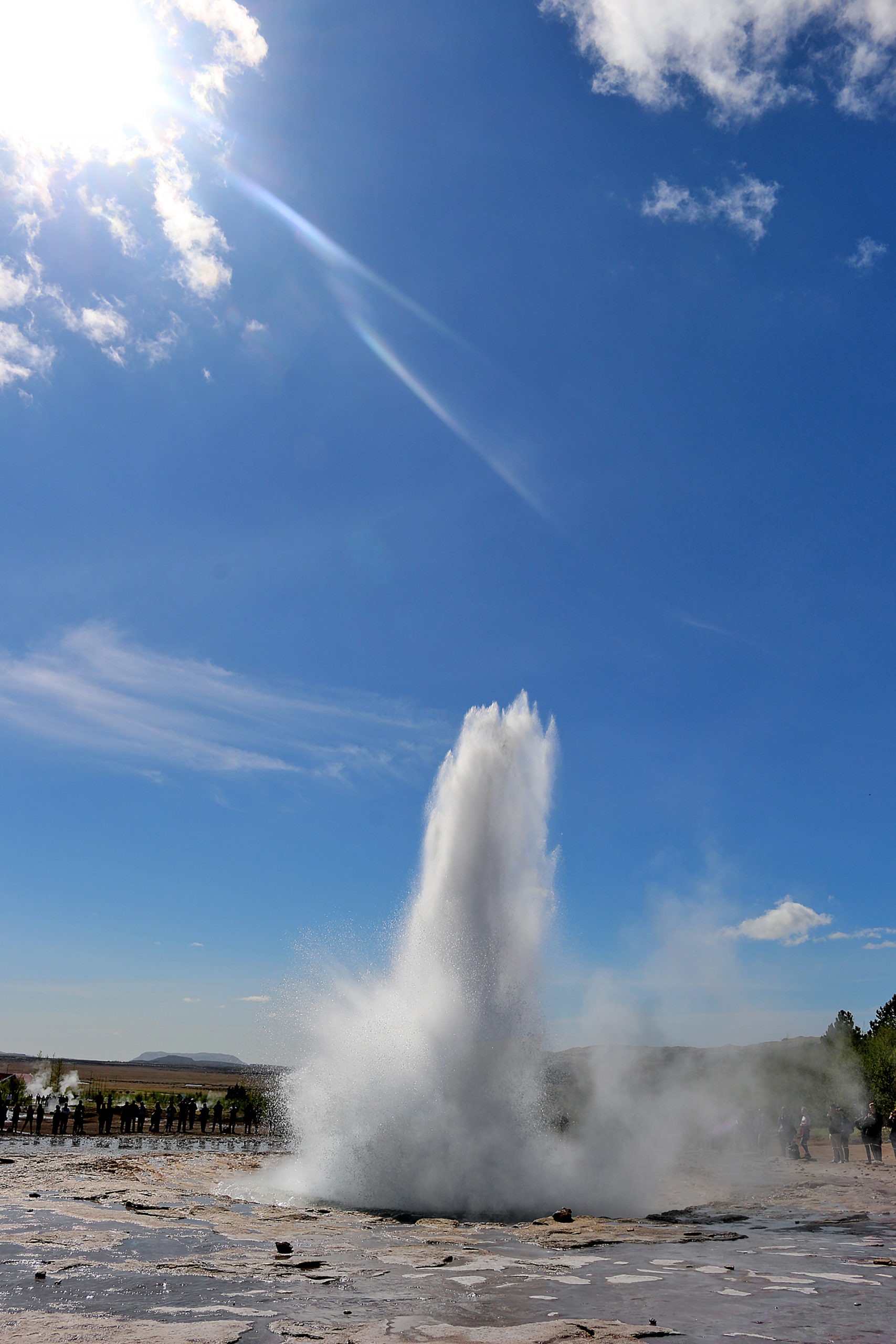
Strokkur means churn in Icelandic, which is what it seems to do prior to its eruption…
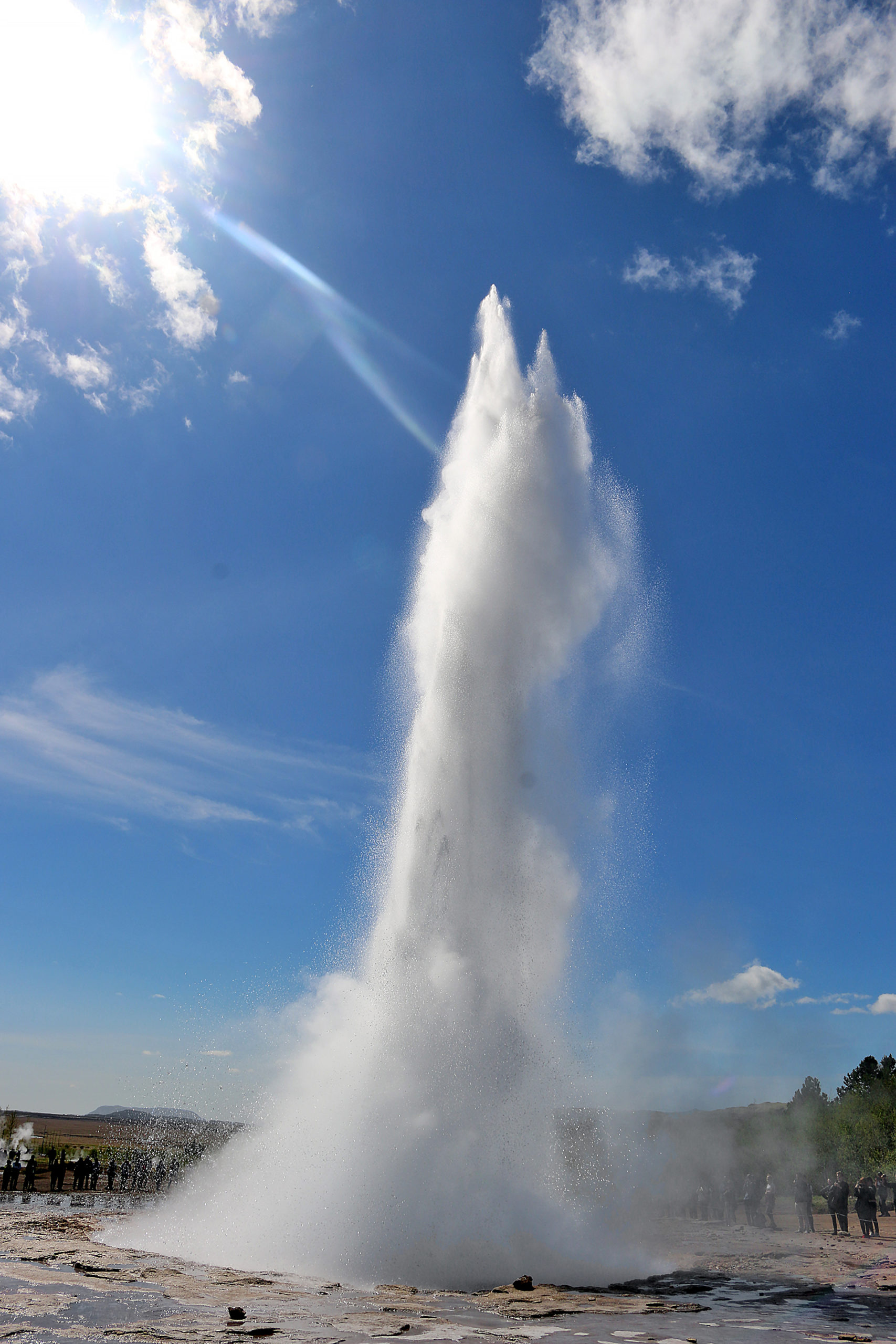
…and the eruption does come rather suddenly after it churns up steam.
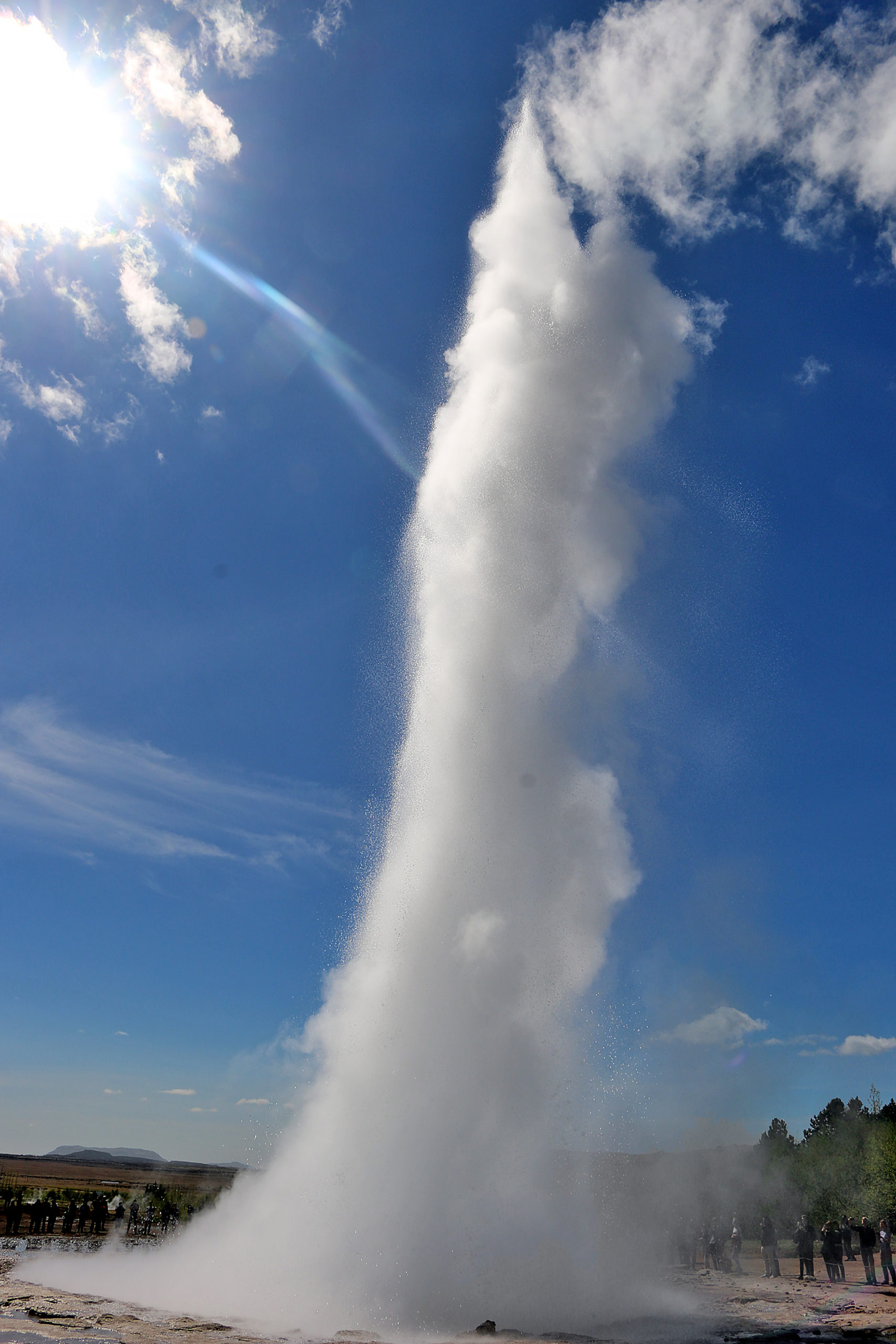
Although the height of its eruption is usually between 50 feet and 70 feet into the air, it can sometimes erupt up to an elevation of 130 feet.
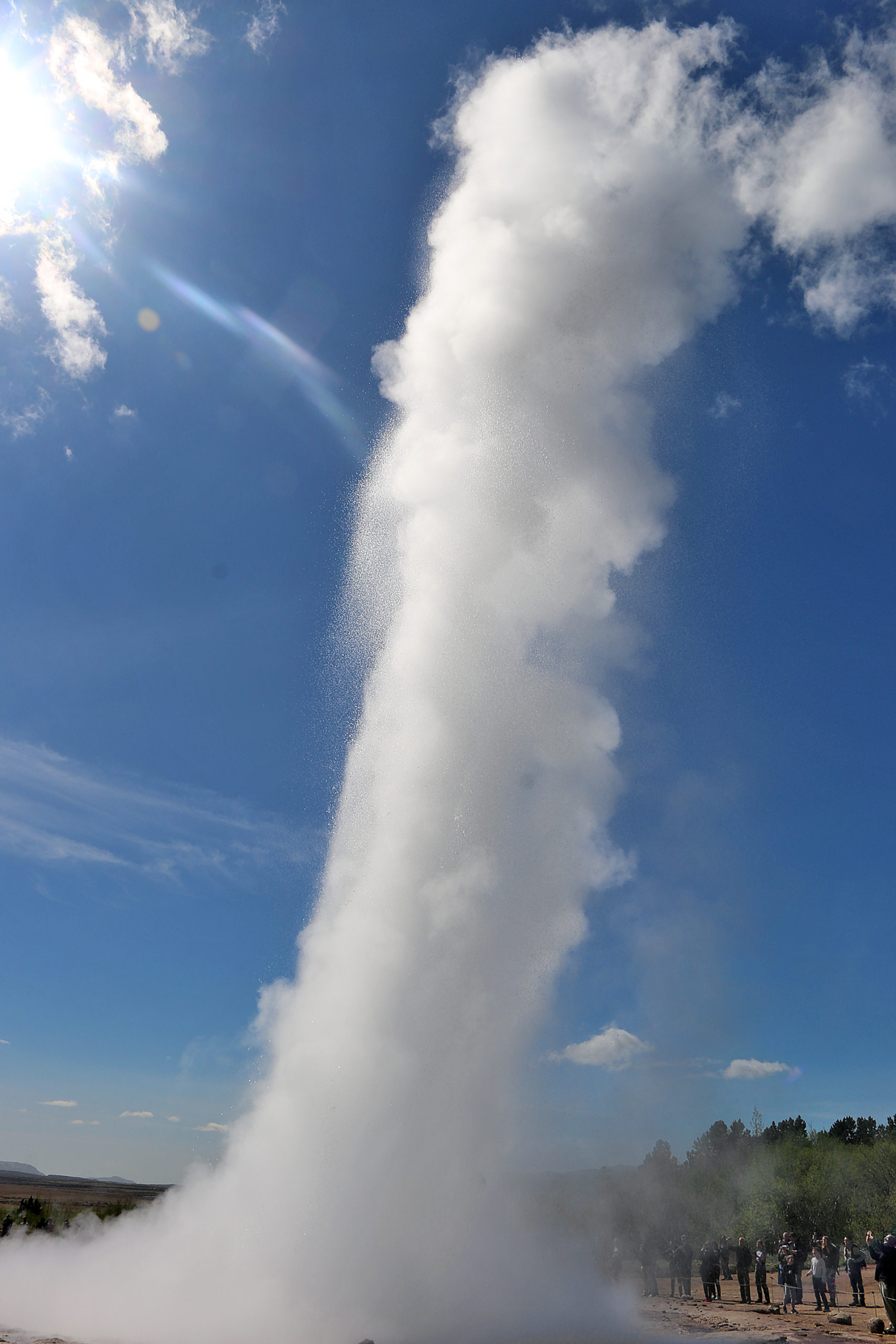
Because of the reliability of its eruptions, Strokkur is the most visited active geyser in Iceland — as well as one of the the most popular attractions on the Golden Circle sightseeing route, with Gullfoss Waterfall and Þingvellir National Park rounding out the top three with Strokkur.
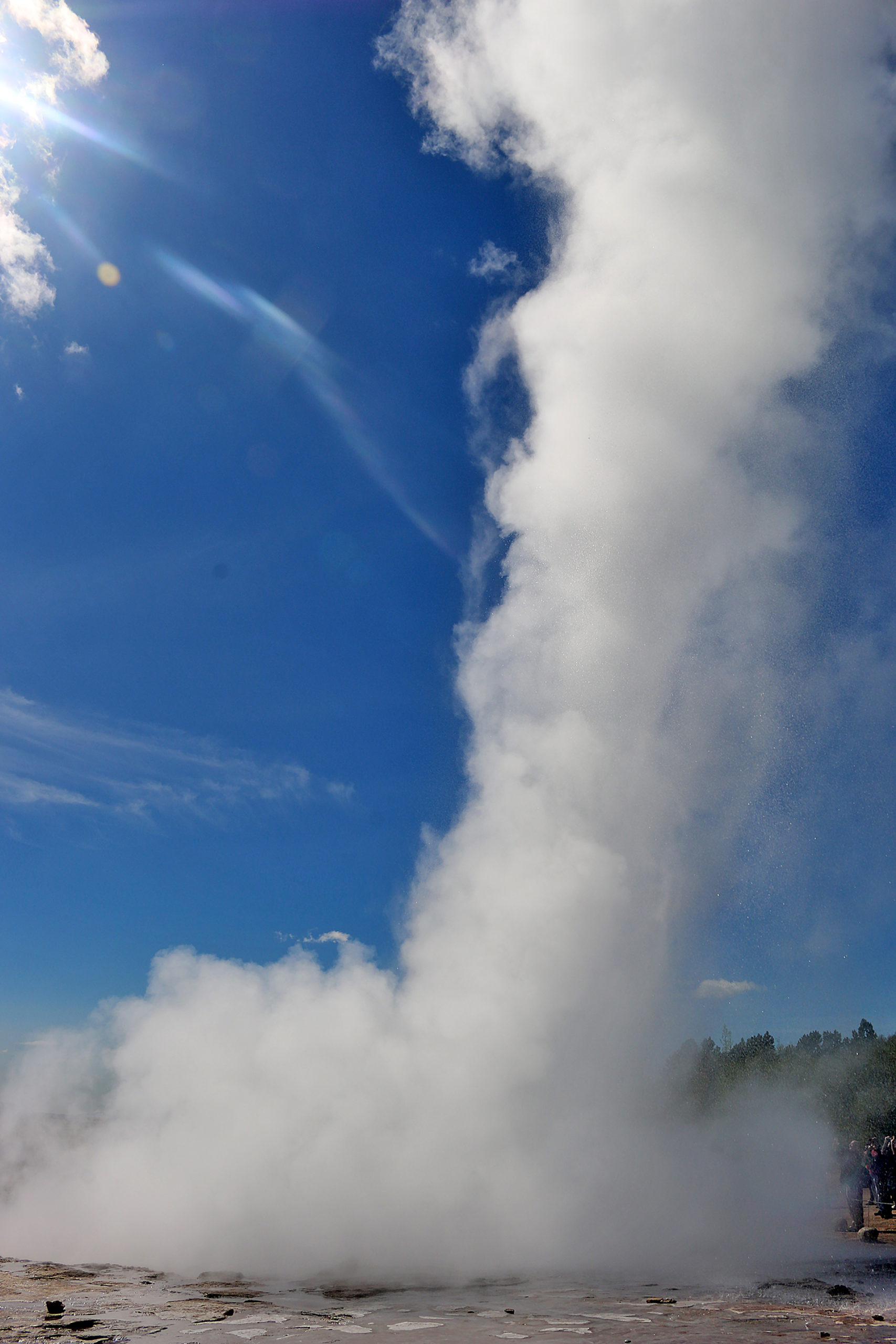
Visitors are advised to stay within marked areas and stand back when a geyser erupts because the extremely hot water and steam can burn — not to mention the elements the water and steam contain, which can act as irritants to the skin and eyes.
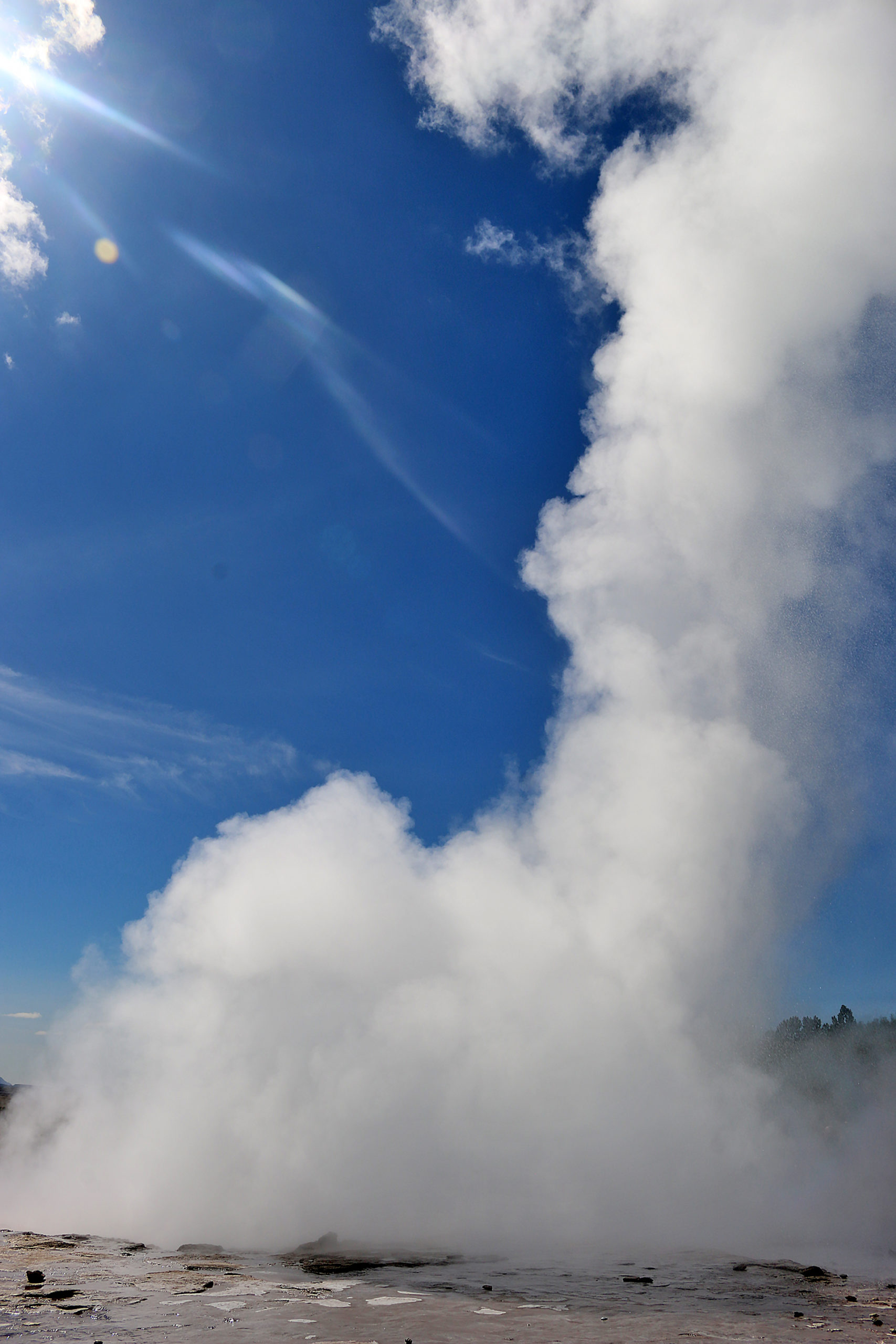
As the structure of the tower of steam falls apart, what is notable about this thermal area is that it does not reek from a strong odor of sulphur.

The cloud of steam from the eruption can be thick enough to momentarily block much of the sun to anything and anyone who is in its shadow — and almost as fast as the eruption itself, the steam dissipates.

Viewing the eruption of Strokkur Geyser is possible from numerous viewpoints at Geysir Geothermal Area.
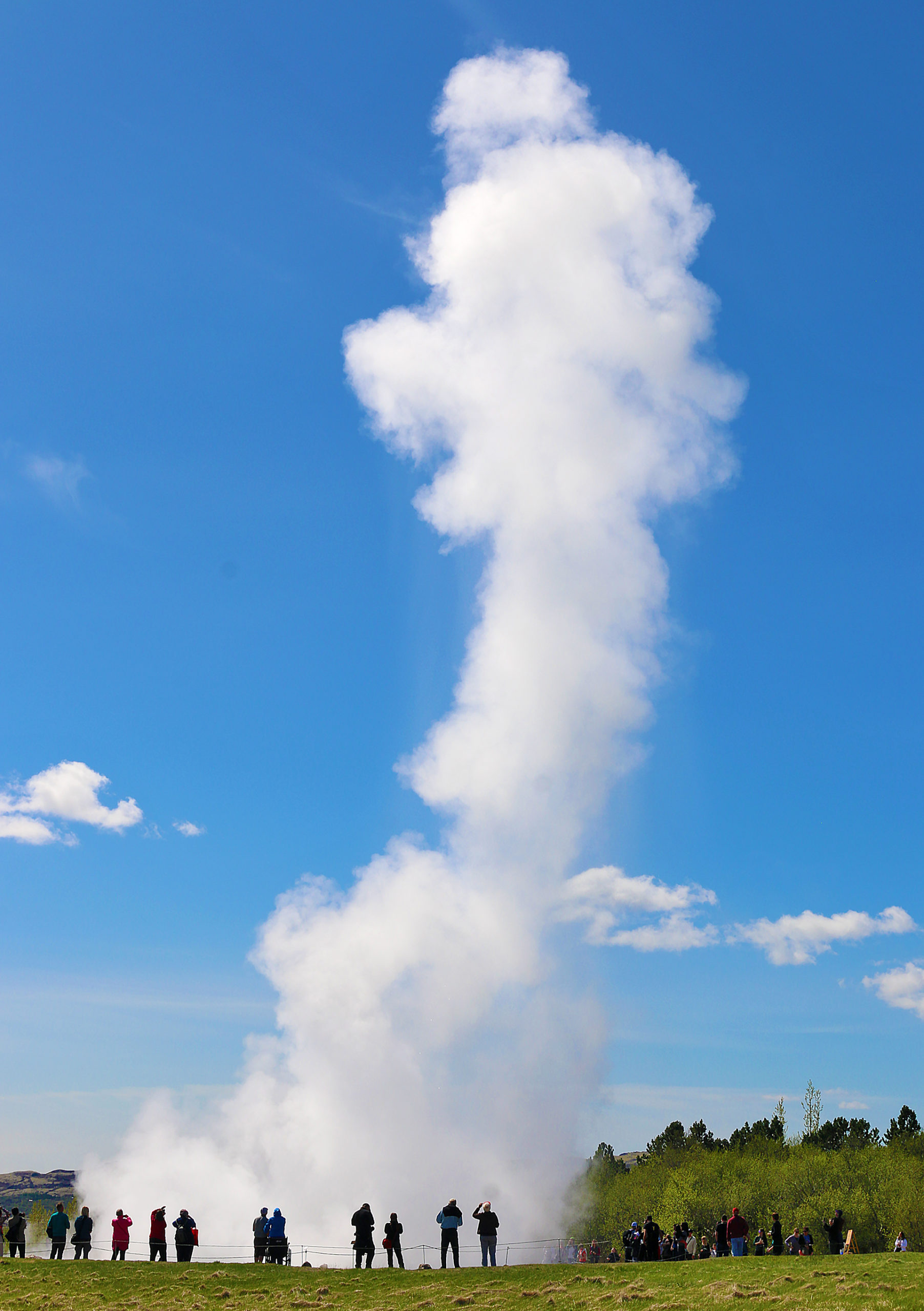
View two of the eruptions of Strokkur Geyser in this short raw video at the official YouTube channel of The Gate With Brian Cohen.
Geysir
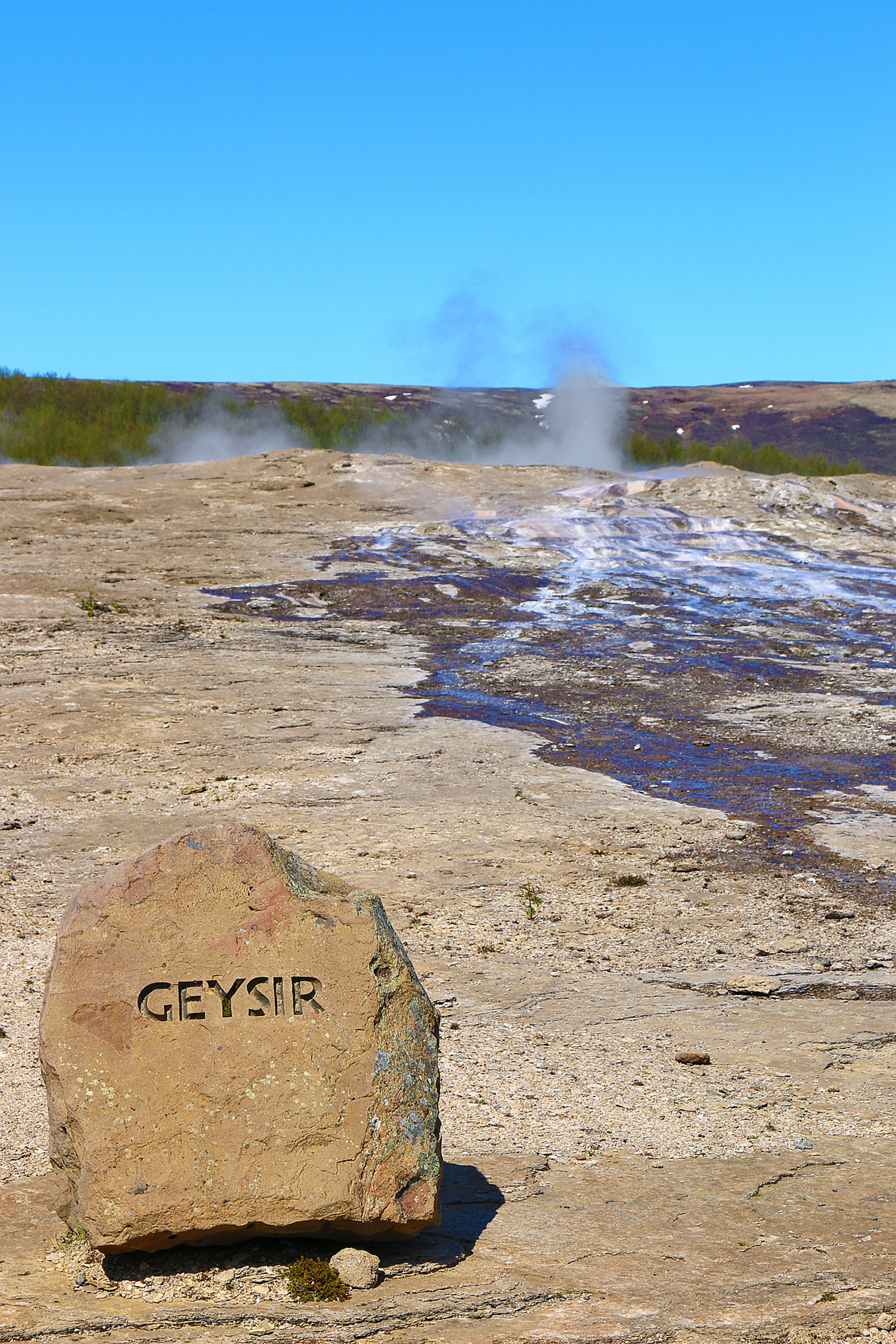
Geysir is the Icelandic name from which the English word geyser is derived — but although it does emit a fair amount of steam, Geysir ironically rarely erupts. On the rare occasion that it does erupt, Geysir sends its water and steam up to 560 feet into the air.

Other Features at Geysir Geothermal Area in Iceland

As the largest and northernmost of the hot springs at Geysir Geothermal Area, Konungshver — whose name translates from Icelandic to English as The Royal Spring — does not erupt. Konungshver commemorates the visit in 1874 by Christian IX, who was the king of Denmark.

The blue colors in Konungshver occur when dissolved silica comes in contact with the atmosphere and provides contrast to the orange hues which surround it.

Blesi is two different hot springs that are connected to each other, which resemble two blue eyes when viewed from above. Now currently dormant, Blesi is a geothermal feature which is located south of Konungshver but north of both Geysir and Stokkur Geyser.

In the foreground of the above photograph viewing towards the southeast is Blesi, with Stokkur Geyser shown immediately in the background between eruptions.

Watching visitors gawk at Strokkur Geysir with their mobile telephones to record all of the action in awe was almost as interesting — almost, but not quite — as watching the eruptions of the geyser itself.

Litli-Geysir literally means little geyser in Icelandic. It may also mean little activity as well.

Final Boarding Call
No admission fee is charged to visit Geysir Geothermal Area; and no fee is charged for parking a vehicle. Plenty of parking spaces are usually available if you plan on driving there instead of taking any of the numerous tours available — but as it is located along Highway 35 approximately 105 kilometers from Reykjavik, be prepared to spend at least one hour and 40 minutes to drive there.
Included in the area known as Geysir Center are two hotel properties, two restaurants, a gift shop, golf, a camp site, a spa, and facilities.
All photographs ©2018 by Brian Cohen.
